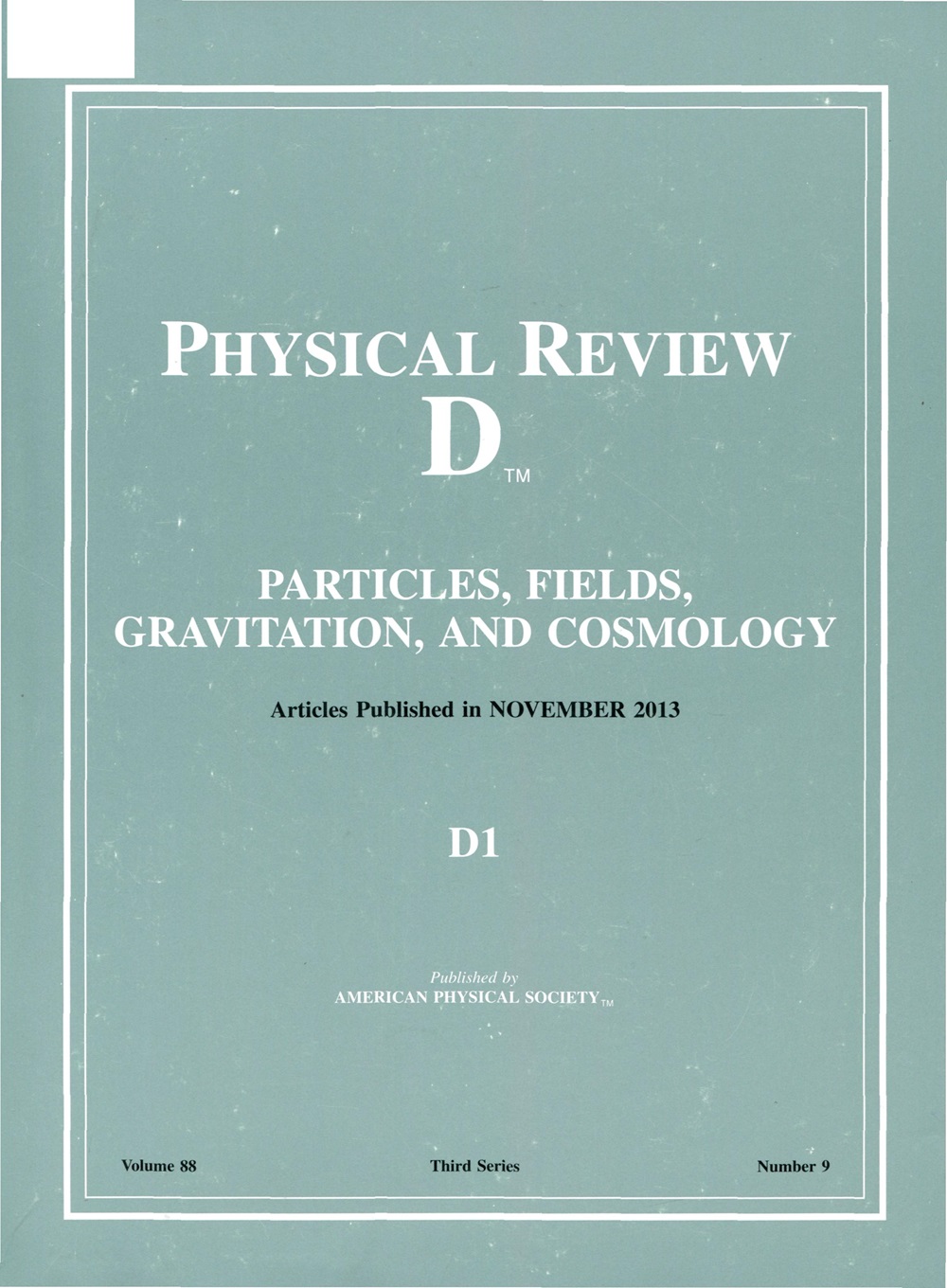Joint explanation of the B→πK puzzle and the B→Kνν¯ excess
IF 5
2区 物理与天体物理
Q1 Physics and Astronomy
引用次数: 0
Abstract
In light of the recent branching fraction measurement of the B+→K+νν¯ decay by Belle II and its poor agreement with the Standard Model expectation, we analyze the effects of an axionlike particle (ALP) inB→πK谜题和B→k ν¯过量的联合解释
鉴于Belle II最近对B+→K+νν¯衰变的分支分数测量及其与标准模型预期的不一致,我们分析了类轴子粒子(ALP)在B介子衰变中的作用。我们假设有一个寿命很长的ALP,它的质量与介子的质量相当,衰变为两个光子。我们关注的场景是ALP衰减长度为米数量级,使得ALP在Belle II的探测器体积之外有不可忽略的衰减概率,模拟B+→K+ν¯信号。值得注意的是,这种排列也与长期存在的B→πK之谜有关,因为测量到的B0→π0K0和B+→π0K+衰变可能分别具有B0→aK0和B+→aK+成分。我们还根据我们的结果认为,所需的alp -光子有效耦合属于一个参数空间区域,可以在未来的光束转储实验中广泛探索,如SHiP。2025年由美国物理学会出版
本文章由计算机程序翻译,如有差异,请以英文原文为准。
求助全文
约1分钟内获得全文
求助全文
来源期刊

Physical Review D
物理-天文与天体物理
CiteScore
9.20
自引率
36.00%
发文量
0
审稿时长
2 months
期刊介绍:
Physical Review D (PRD) is a leading journal in elementary particle physics, field theory, gravitation, and cosmology and is one of the top-cited journals in high-energy physics.
PRD covers experimental and theoretical results in all aspects of particle physics, field theory, gravitation and cosmology, including:
Particle physics experiments,
Electroweak interactions,
Strong interactions,
Lattice field theories, lattice QCD,
Beyond the standard model physics,
Phenomenological aspects of field theory, general methods,
Gravity, cosmology, cosmic rays,
Astrophysics and astroparticle physics,
General relativity,
Formal aspects of field theory, field theory in curved space,
String theory, quantum gravity, gauge/gravity duality.
 求助内容:
求助内容: 应助结果提醒方式:
应助结果提醒方式:


